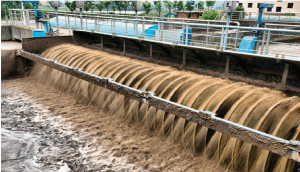SLUDGE REDUCTION & WASTEWATER TREATMENT
In an article written by Derk Maat for the Environmental Science and Engineering magazine (Sept/Oct edition), Derk explains the remarkable power of micronutrients in accelerating the processes and reducing the cost of wastewater treatment. Every wastewater treatment facility has the onerous task of treating, separating and disposing of biosolids, using processes that rely heavily on natural and biological decomposition. The challenge for every wastewater treatment facility is in speeding up the process and reducing the resultant sludge waste, and this is where micronutrients come in.
The major reason for the slow digestion of organic solids from wastewater is hydrolysis. A contributing factor to this problem is that hydrolyzing bacteria are not functioning at full capacity due to low aeration and low micronutrient levels. Often wastewater treatment plants will utilize an activated sludge process that requires aeration to stimulate certain bacteria, however that process is costly, requiring up to 30% increases in energy costs and 40% in sludge removal costs. The addition of plant based micronutrients have proven to do the same activity by stimulating the hydrolysis of organics, however there is no need for specialized equipment, it does not require any additional energy at all, the resultant sludge is considerably lower, and a great side benefit is that odors are eliminated.
Facilities using this micronutrient approach have experienced reductions in biosolids/sludge requiring disposal and in energy costs in excess of 25%. The net cost savings to treatment plants typically range from $1.50 to $2.00 for every $1 spent on organic micronutrients. Typically, this micronutrient is added as a liquid at the head works of a plant, in a wet well, equalization tank or anoxic biological nutrient remover reactor. It changes systems where there is little bioactivity under normal conditions into more active anoxic treatment zones.
So the question remains, why would you use costly systems that add to the carbon footprint, that increase costs and that produce greater waste, when you can simply add a natural micronutrient to your systems and get better results?
To see the full article, Environmental Science and Engineering Article Sept Oct 2014


